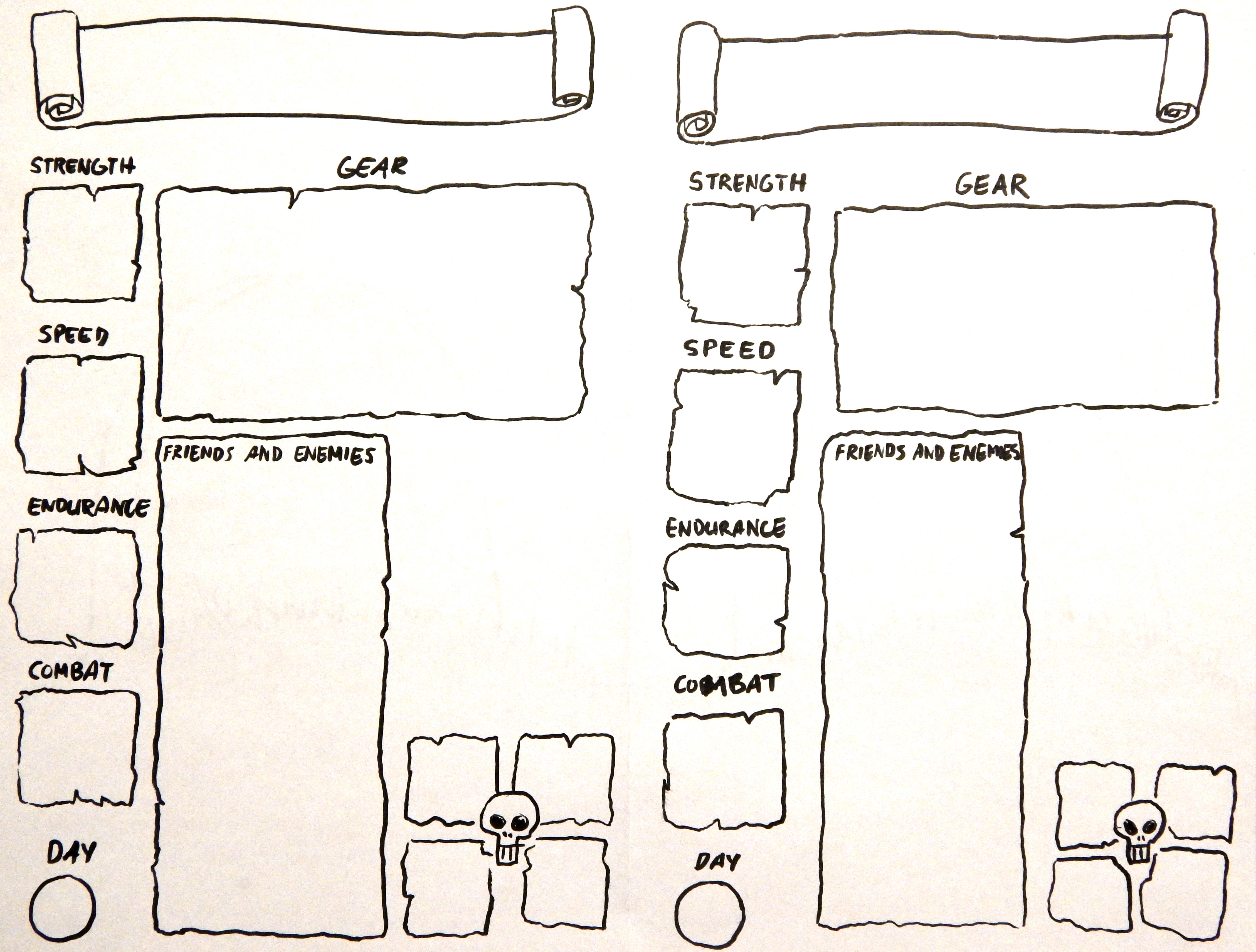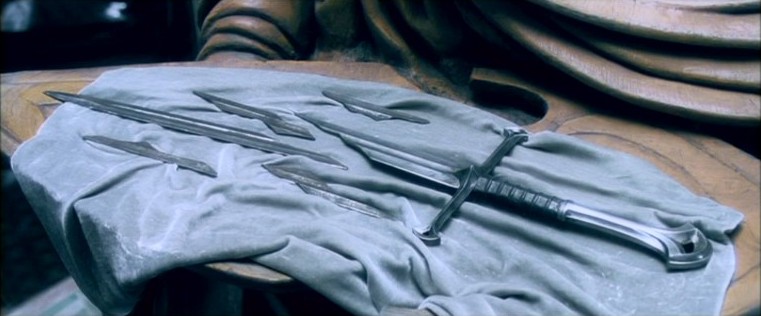On Tuesday, I ended up running my elementary school’s RPG club by myself, so I had two groups on my hands. My usual group was familiar enough with Dungeon World that they could run it themselves, so that left me with the other group, who normally played Pathfinder.
I decided to try Sellsword, the game idea I’ve been tinkering with. I’ve skimmed the Amber rules, so I spent 20 minute drawing a character sheet and company sheet, photocopied them, and was ready to go with minutes to spare.

Front of the sheet. Skull-boxes are for wounds, “Day” is for how long you’ve survived. There was also a company sheet (they named theirs The Company of the Iron Claw) with a place to draw a map of their hideout. This proved a popular feature. Unfortunately, I’m not sure what happened to it.

Back of the sheet. Write your fate on the tombstone when you die.
Playing diceless has some interesting effects. The GM has to be ruthlessly fair, since everything depends on his calls. In general, I let contests be decided purely by the greater stat, and skill based things only worked if they could describe in detail exactly what they were doing. Very player focused, as opposed to character focused. Things got hairier when people started double teaming others in combat. I decided to rule that teaming up against people gives you a huge advantage, as it would in real life, and I think it played out pretty well.
I used four stats, Strength, Endurance, Speed, and Combat. Basically the same as Amber, except I used Speed instead of Psyche. One thing I didn’t do a good job of using during the game was Speed. I initially imagined it as a way to compare characters during chases, but what I should have been using it for was maneuvers. It should be the stat for gaining positional advantage.
Many of my 5th graders started figuring out how lethal this game was pretty quickly, and began avoiding combat, even though I wasn’t going my hardest at them. I only gave them four wound slots before they died, but only one ended up in the graveyard, and that was due to PvP combat. The characters were very fast to generate, but I should have made them even easier, or rather I should have had them generate a stack of characters before hand, so that they could be replaced quickly as they died. I’m still not used to running a game this lethal.
I felt that everyone acted much more realistically once they realized that they were very vulnerable (similar to my experience running World of Dungeons), and that’s a good thing. They also tried to help each other more, and were willing to retreat from a fight.
I also made a concession to character background and had them write in a friend and an enemy on their sheet, but this was a bad idea. It makes the characters too relatable at the beginning. Instead they should write an ally and an enemy(s?) on their company sheet, which persists as the characters die.
Everyone had a great time, and there are simmering character conflicts that would be fun to explore. The two girls in the group decided to sit in the warm tavern by the fire while all the guys trudged through the rain and mud to find the bad guys, returning wounded and exhausted. The girls were planning to get the guys killed so they could start a cloak-making shop. It was great.
I’m calling a success for a first try, and I’d like to run it again with some changes. I’m also thinking about an alternate system, where players use playing cards and script out actions similar to Mouse Guard and Torchbearer. It would provide the kind of tactics and teamwork that I’m looking for. More on that later.






